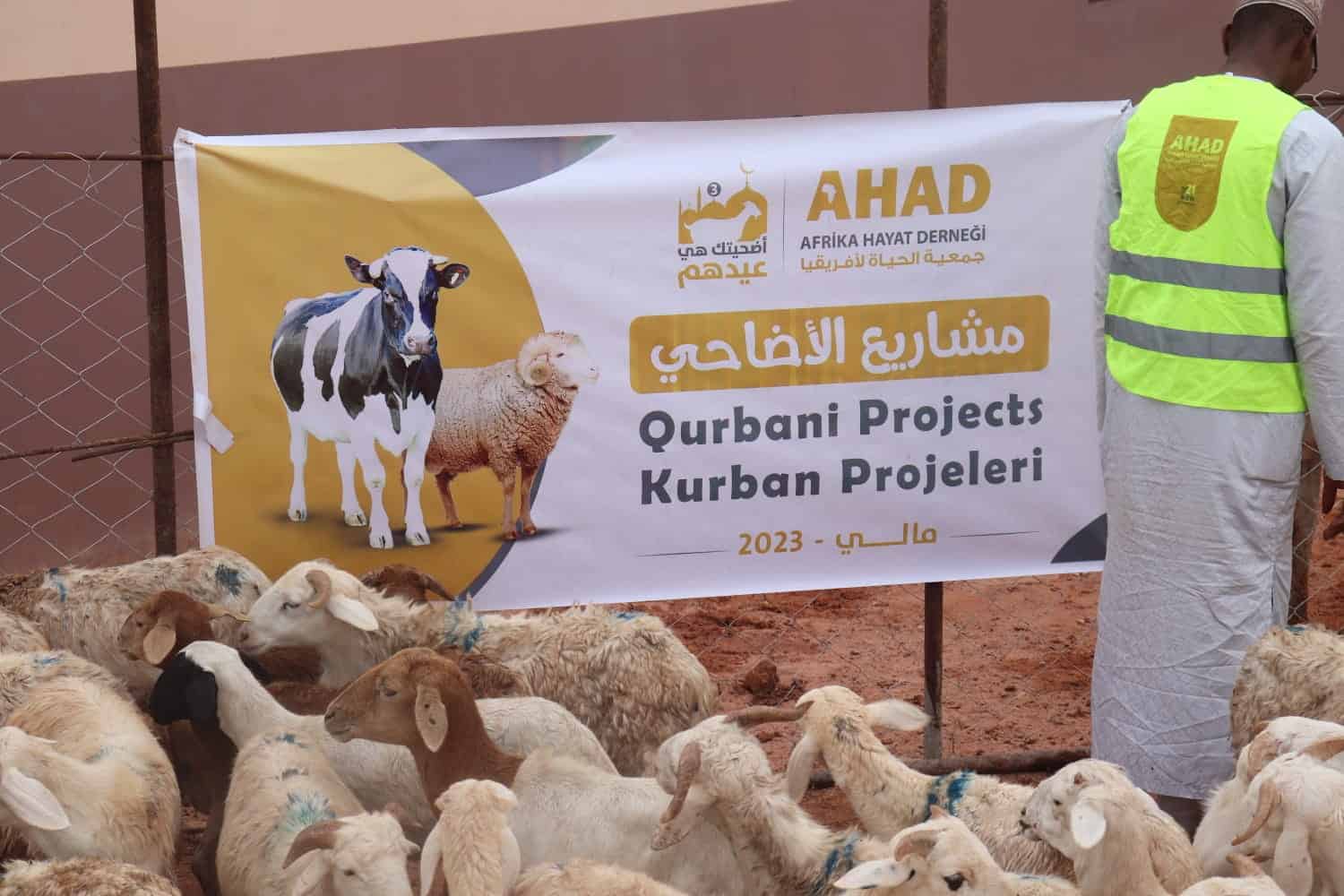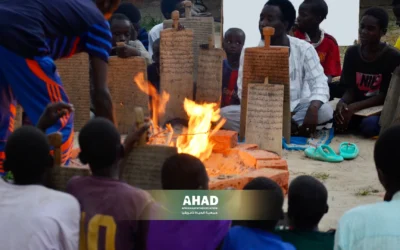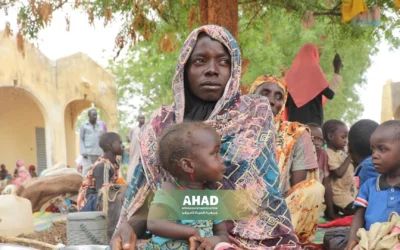A comprehensive guide about Eid al-Adha
Eid al-Adha is a religious celebration celebrated by Muslims all over the world. It is celebrated by sacrificing animals and distributing sacrificial offerings to the poor and needy. The rituals of Eid include the Eid prayer and the performance of Hajj rituals for pilgrims in Mecca and Medina. Eid al-Adha is considered an opportunity to consolidate family and social relations and spread joy and happiness in society.
A guide to the meaning of Eid al-Adha
Eid al-Adha is one of the important religious holidays in Islam. It is celebrated by Muslims to remind them of the sacrifice of the Prophet Ibrahim (peace be upon him) and to bless him with the sacrifice of his son Ishmael. The holiday symbolizes faith, piety and self-sacrifice for the sake of God. The holiday is considered an opportunity for spiritual renewal, consolidation of family and social relations.
The importance of Eid al-Adha in Islam
Eid al-Adha is one of the most important holidays in Islam, as Muslims celebrate it every year. Eid is considered an opportunity to remind Muslims of the sacrifice of the Prophet Ibrahim (peace be upon him) and to fill him with the sacrifice of his son Ishmael. The holiday symbolizes faith, piety and self-sacrifice for the sake of God. The holiday is considered an opportunity for spiritual renewal, consolidation of family and social relations.
Actions and rituals during Eid al-Adha
Muslims celebrate Eid al-Adha by performing the Eid prayer in mosques, followed by the recitation of the Eid sermon by the imam. After the Eid prayer, Muslims exchange congratulations and blessings with each other. Also on this day people get used to dressing beautifully and visiting relatives and friends, exchanging gifts. It is also customary to come to the slaughtered sacrifices and distribute them to the poor and needy. Children enjoy games and entertainment events organized on Eid days.

Eid prayers
On Eid al-Adha, Muslims perform Eid prayers in mosques or in special chapels. The Eid prayer consists of two Rak’ahs, which are led by the imam and followed by the worshipers. After completing the prayer, the imam recites the Eid sermon in which religious guidance and advice to Muslims are given. On this day, blessed prayers are repeated such as: “accept Allah well and Allah has entered paradise without calculation” and “Allahu akbar, Allahu akbar, there is no God but Allah, Allahu akbar, Allahu Akbar, and all praise be to Allah”.
Customs and traditions of celebrating Eid al-Adha
The Customs and traditions of the Eid al-Adha celebration are centered around the exchange of congratulations and blessings between people. Friends and family gather at each other’s houses to exchange visits and celebrate together. Gifts and gifts are exchanged between individuals, and also delicious food and special holiday sweets are eaten. Not cutting hair or shaving a beard before slaughtering a sacrifice is considered a usual tradition in many Muslim cultures.
Sacrificial sacrifice
Sacrificial sacrifice is one of the important actions on Eid al-Adha. Muslims slaughter legitimate animals and offer them as a sacrifice as an expression of gratitude and closeness to Allah. Part of the meat is offered to the poor and needy, the rest is kept for eating by family and friends. This work reflects the spirit of sharing, giving and compassion that Eid al-Adha is famous for.
The meaning and goals of offering sacrifice
Offering sacrifice is an expressive worship in Islam with multiple goals. It expresses sacrifice and gratitude to God for his grace, humility before him, the desire to draw closer to him. One of the goals is also to distribute meat to the poor and needy, to contribute to achieving social justice and providing food needs. It also aims to spread the spirit of cooperation and love in society.
How to choose the right sacrifice
For the correct selection of the right victim several factors must be taken into account. It must be ensured that the sacrifice is healthy and healthy, and that it meets the legitimate conditions for slaughter. It is preferable to choose a sacrifice that will be at puberty, have good strength and fatness. Experts in the field of slaughter can also be hired to ensure the quality of the sacrifice.
Pilgrims performing the Hajj rituals
Performing the Hajj rituals is one of the most important religious rituals performed by pilgrims on Eid al-Adha. This includes performing circumambulation around the Kaaba and striving between Safa and Marwa. It also includes standing Arafah and throwing embers. These rites require adherence to the specified conditions and pillars, pilgrims are guided by supervisors and guides.
Conditions and pillars of Hajj
Performing Hajj rituals requires adherence to specific conditions and pillars. The most important condition is that a person must be a Muslim and have reached puberty. The pilgrim must also be physically able and healthy to perform the Hajj. The three pillars of Hajj include standing Arafah on the eighth day of Dhu al-Hijjah, throwing embers, and circumambulating the Kaaba. The pilgrim must also travel between Safa and Marwa seven times.
The Hajj experience and its importance
The Hajj experience is one of the most important life experiences for Muslims. It gives them the opportunity to communicate directly with God, renew the Covenant and repent. Pilgrims consider themselves guests of Allah, spending their days performing devotions and recalling the best values of Islam. The importance of Hajj includes the strength of social cohesion, cooperation and solidarity among Muslims of different cultures and ethnicities.

Distribution of sacrifices and alms in society
The distribution of sacrifices and alms in the community are beautiful and valuable customs that consolidate the spirit of love and solidarity among the members of the community. The distribution of meat and alms on Eid al-Adha is an opportunity to help those in need and alleviate their suffering. It also promotes the spirit of cooperation and rapprochement between community members, which contributes to building a better and interconnected society.
The benefits of distributing meat on Eid al-Adha
The benefits of distributing meat on Eid al-Adha are to achieve social justice, as meat is distributed to the needy, the poor and Orphans, which contributes to meeting their nutritional needs and alleviating their suffering. The distribution of meat also promotes the spirit of solidarity and cooperation between community members, and deepens social relations between them. That actual charity reflects the spirit of giving and generosity in the Muslim community.
When is Eid al-Adha
The importance of alms and charity on the day of Eid al-Adha
On the day of sacrifice, the importance of giving and giving alms comes to strengthen the spirit of giving and solidarity between people. The distribution of alms on this day is considered one of the loving worship of Allah, and sacrificial alms are considered more acceptable on this blessed day. Charity contributes to meeting the needs of those in need and alleviating their suffering, and works to strengthen the benevolent spirit in society and deepen social relations between people.
Preparation and preparation for Eid al-Adha
People begin to prepare and prepare for Eid al-Adha a few days before its date. People are cleaning houses and buying new clothes for the feast. They also buy suitable sacrificial animals and prepare them for sacrifice. In addition, festive dishes and desserts are being prepared to celebrate it over the coming days.
Preparations for the holiday reception
Before the feast day, people prepare their homes to receive guests and parents. This includes a good cleaning and tidying up of the house, decorating it with flowers and special holiday decorations. They also buy gifts for children, prepare sweets and traditional cuisine to celebrate on the feast day.
You can visit the ahad Association website to find out more about the projects it offers
Related articles:
The importance and bounty of the month of Ramadan
Join us in our message by donating




